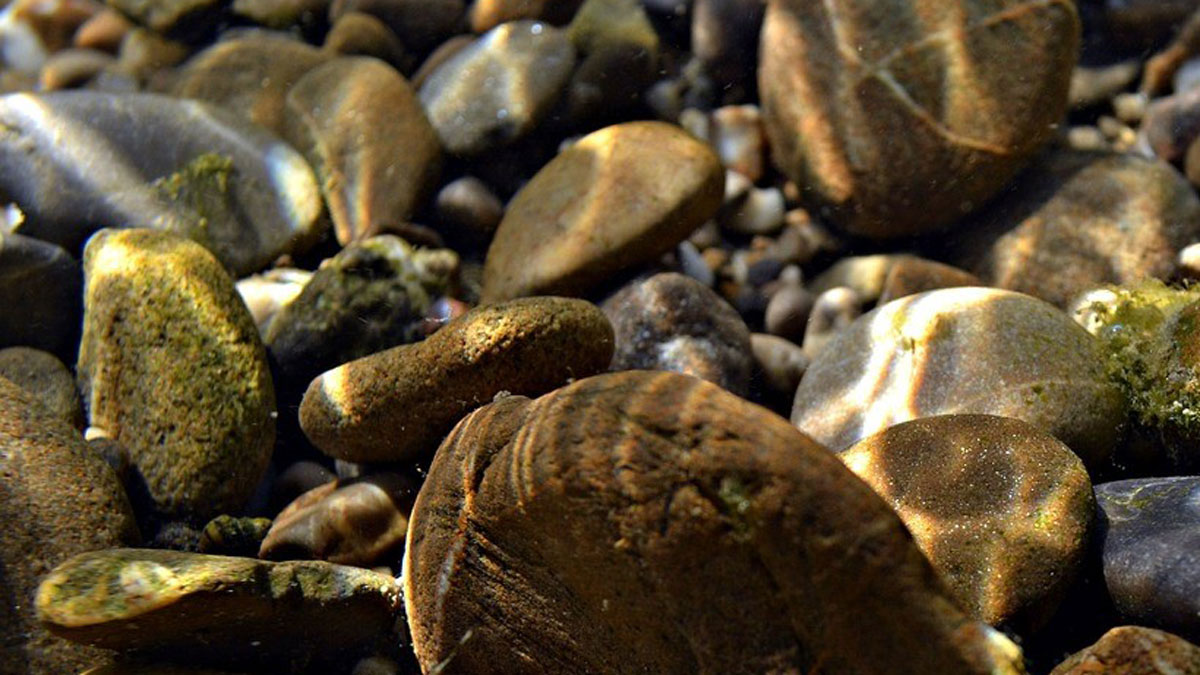“Sediment transport is one of the more important processes shaping the surface of planetary bodies with atmospheres and [grainy] surfaces.”
Many landscapes are built one grain at a time as particles are torn from the ground and carried away by rivers or wind to be deposited elsewhere. The efficiency of these processes dictates how quickly the environment responds to disturbances. Accurately predicting those responses, such as the reshaping of a landscape after a storm or a dam removal, depends on how well scientists understand how sediment moves, particularly in a river. A new study showed how grain shape is a critical variable in a water body’s efforts to push debris downstream.
“Sediment transport is one of the more important processes shaping the surface of planetary bodies with atmospheres and [grainy] surfaces,” said geomorphologist Eric Deal at Eidgenössische Technische Hochschule (ETH) Zürich’s Geological Institute in Switzerland, lead author of the study. Scientists can piece together the evolution of landscapes on Earth and beyond if they can decode records buried in sediment, he added.
Shaping the Problem
Since the 1930s, scientists have used one key mathematical formula to calculate the force and speed of fluid pushing on a bed of sediment. More recent research has acknowledged the influence of grain shape on the process but found it cumbersome to quantify. Deal and his colleagues recently developed a model to predict how sediment will bounce along a streambed that builds upon the established formula but incorporates the effects of shape in a new way.
“The difficulty of accounting for shape is that it cannot be described with a single number,” Deal said. Instead of trying to figure out the exact shape of a grain—what earlier work had attempted—the researchers focused on two related properties: drag and friction. Drag is an object’s resistance to fluid flow, and friction is the ability of grains to grip each other. Both factors affect a grain’s movement over a streambed. Incorporating them into the mathematical formula offered a new, more accurate measure of sediment transport.
Deal and his colleagues validated the concept with experiments on five types of grainy materials, including artificial glass and naturally sourced river gravel, all of similar size and density but of varying shape. To measure drag, the researchers dropped the grains into a tank of water and clocked how long it took for each to hit the base. To assess friction, they poured grains through a funnel onto a tray, where they measured the pile’s angle relative to horizontal.
The researchers then observed that the five materials moved at different speeds through a simulated flowing stream, and their model could predict that movement with accuracy. Their new approach showed that uncertainty in sediment flow measurements, which plagued earlier research, can be dramatically reduced by incorporating the drag and friction factors of grains.
Small Details, Big Implications
“This research provides an important contribution to the field by revealing that variability in sediment transport may also have a deterministic cause.”
The rates at which sediments flow “exhibit an enormous variability—covering several orders of magnitude—which makes their prediction notoriously difficult,” said Christophe Ancey, a researcher at École Polytechnique Fédérale de Lausanne who was not involved in the study. “This research provides an important contribution to the field by revealing that variability in sediment transport may also have a deterministic cause.”
Grain shape may seem to be a tiny detail, but this new research demonstrated how important it is in determining how sediments are transported. The researchers’ approach enables greater accuracy in predictions of sediment transport, benefiting engineers trying to safely restore and manage precious water resources and even geoscientists analyzing a rock record.
“On Earth and Mars especially, the sedimentary deposits laid down by sediment transport in rivers and on coasts is an important record of the past,” Deal said. “We can interrogate this record to find out what was happening on the surface in the past, from changes in climate to rates and locations of tectonic deformation.”
—Clarissa Wright (@ClarissaWrights), Science Writer

